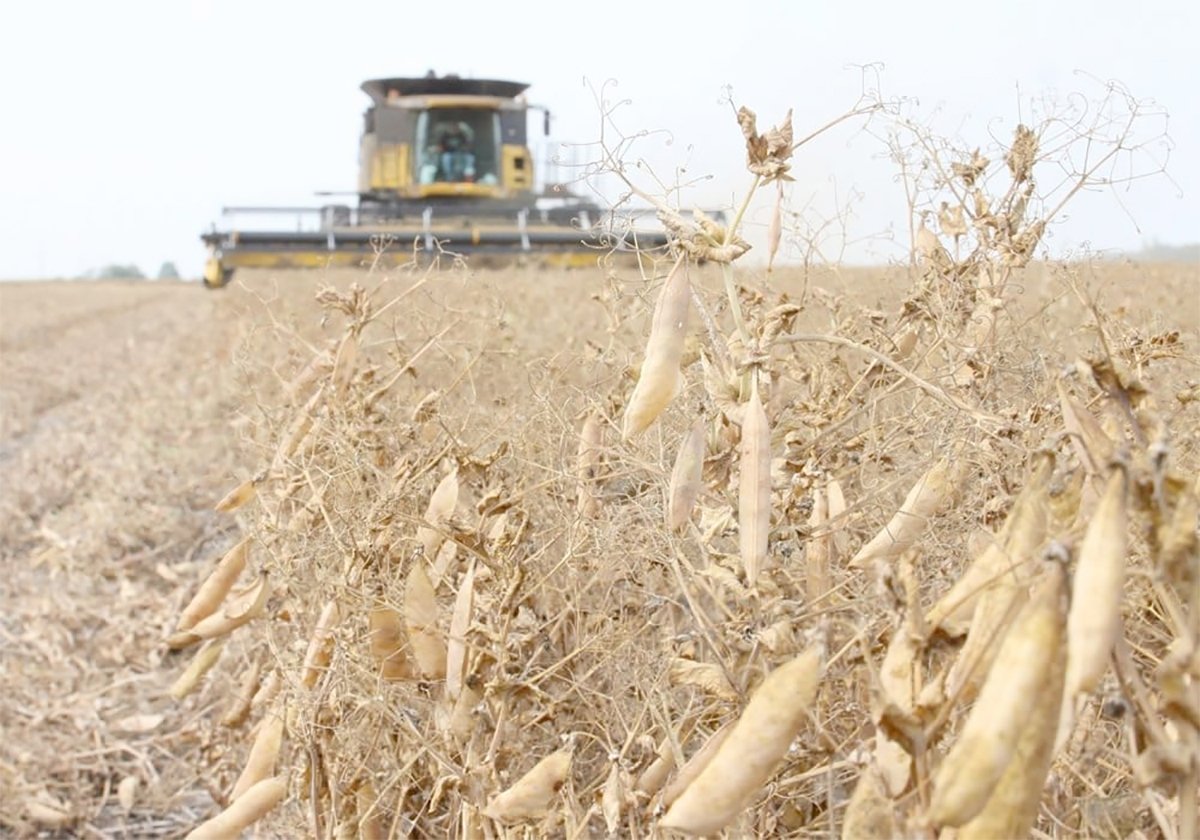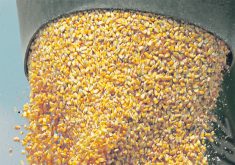World wheat markets look a lot better for 2006-07 than they did for 2005-06.
Unfortunately, a strong Canadian dollar means better world prices aren’t likely to put extra dollars in Canadian farmers’ pockets, says the Canadian Wheat Board.
“Were not the exchange rate working against us, we’d be more positive than we are now (about higher prices in the coming year),” said board market analyst David Boyes.
“You’d see probably another $15 (per tonne) if it weren’t for the exchange rate. Then it would seem like a very big difference,” said Boyes after releasing the board’s first Pool Return Outlook of the 2006-07 year.
Read Also

Chinese, Indian tariffs take toll on pea prices
The disruption of pea exports from Canada’s largest customers will likely result in slow pea exports for the remainder of the crop year.
Another major factor in the board’s outlook is its protein and quality assumptions. It assumes a normal protein spread in Canada’s crop and less competition from low quality Black Sea and Argentine wheat.
Combined, this means quality premiums will fall and lower quality discounts will weaken.
No. 1 Canada Western Red Spring 14.5 percent protein wheat is expected to bring producers $214 per tonne, or about $5.82 per bushel, compared to $222 per tonne and $6.04 a bu. in the present 2005-06 crop year.
Standard and lower protein No. 1 CWRS are off $1-$2 per tonne from the current old crop PRO.
But lower grades are expected to fetch slightly better prices than this crop year.
Boyes said the better outlook for low quality wheats is due to problems in Argentina, Russia and Ukraine, where weather has reduced prospects. In recent years those countries have poured low quality wheat into the world market, creating discounts for lower grades.
Without those countries exporting this year – the Black Sea area has suffered substantial winter damage and Argentina’s crop has been hurt by drought – Canada will be able to charge more for lower quality wheat.
But the return to a normal crop for Canada, which the board predicts, will hurt the price of higher quality grades that have seen premiums recently because of short supply.
“We’re seeing the premium go back to normal levels,” said Boyes.
“This year we’re forecasting a return to a normal quality profile for Canada.”
Durum prices, already disappointing this year, are unlikely to be much stronger in 2006-07, Boyes said. Weather has been good in North Africa, giving that big durum-eating population enough local supply to meet most of its needs.
“The North African crop is looking big. It’s hard to say what an average is for North Africa because the variability is so great,” said Boyes, noting the North African crop ranges between two million and six million tonnes.
A large carry in of old crop durum in Canada and the United States is also expected to weigh on prices.
The new crop quality durum price outlook is similar to old crop PRO, but No. 2 and 3 grade prices are expected to be stronger.
The board forecasts feed barley to receive only $113 per tonne versus this year’s $125.
Australia had a big barley crop and Ukraine and Russia are expected to increase production as they seed spring barley on damaged winter wheat acres.
Malting barley is expected to weaken by $1 to $5 per tonne.
Boyes said the huge surge in the value of the Canadian dollar has chopped about $15 of value from every tonne of board grain and disguised the real rally that has occurred in the wheat market. He expects to see world wheat prices hold at today’s level.
“We’re seeing the market in a sustained rally right now,” said Boyes. “This doesn’t feel like a market blip.”
But because the market already expects Black Sea and U.S. hard red winter wheat crops to be smaller, there is a chance of the market falling if those crops recover.
“I’d say the upside potential is very limited now. It’s just a matter of how much it will ease off,” said Boyes. “Weather in the spring will be key.”















